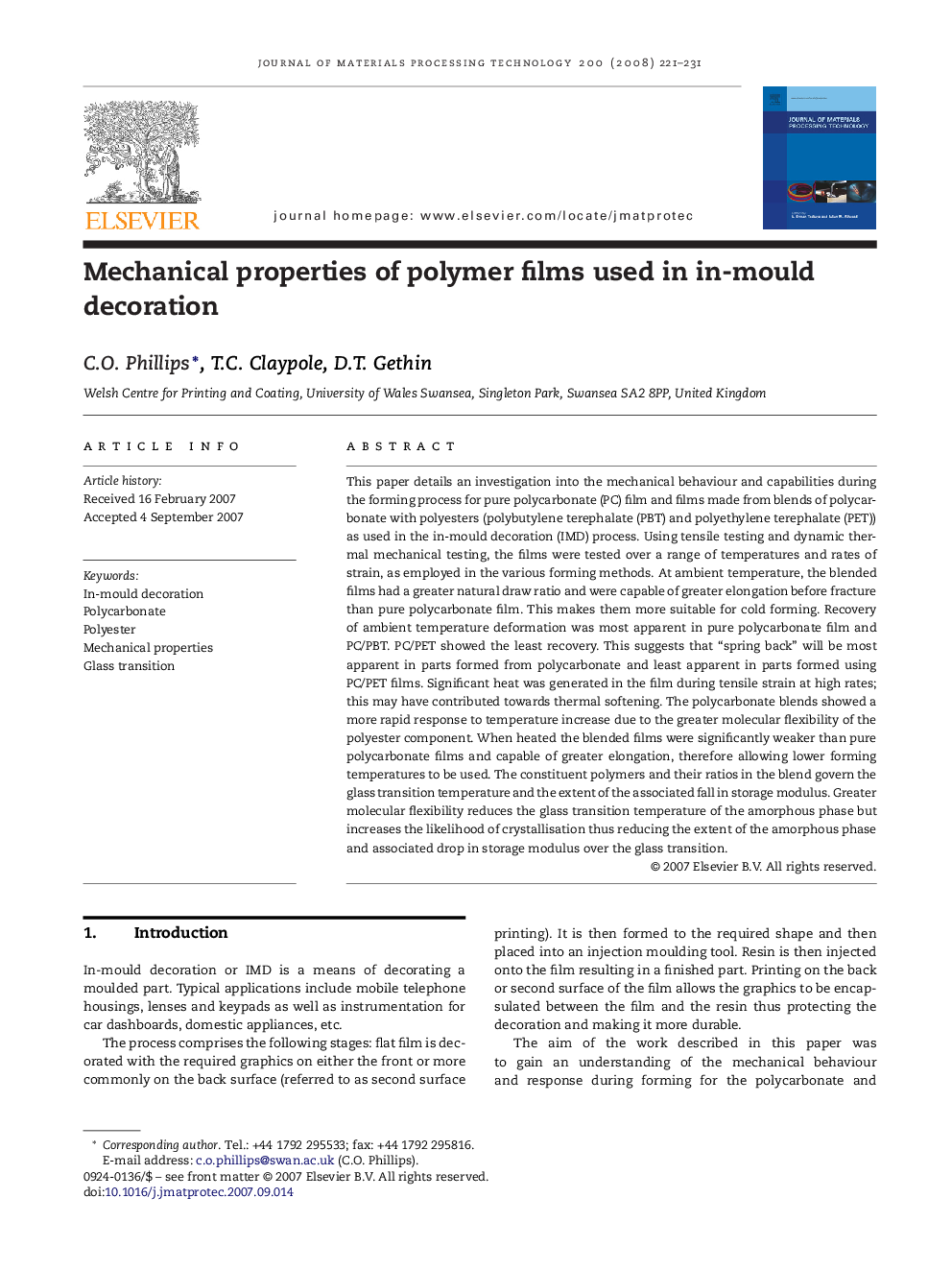| کد مقاله | کد نشریه | سال انتشار | مقاله انگلیسی | نسخه تمام متن |
|---|---|---|---|---|
| 798718 | 1466766 | 2008 | 11 صفحه PDF | دانلود رایگان |

This paper details an investigation into the mechanical behaviour and capabilities during the forming process for pure polycarbonate (PC) film and films made from blends of polycarbonate with polyesters (polybutylene terephalate (PBT) and polyethylene terephalate (PET)) as used in the in-mould decoration (IMD) process. Using tensile testing and dynamic thermal mechanical testing, the films were tested over a range of temperatures and rates of strain, as employed in the various forming methods. At ambient temperature, the blended films had a greater natural draw ratio and were capable of greater elongation before fracture than pure polycarbonate film. This makes them more suitable for cold forming. Recovery of ambient temperature deformation was most apparent in pure polycarbonate film and PC/PBT. PC/PET showed the least recovery. This suggests that “spring back” will be most apparent in parts formed from polycarbonate and least apparent in parts formed using PC/PET films. Significant heat was generated in the film during tensile strain at high rates; this may have contributed towards thermal softening. The polycarbonate blends showed a more rapid response to temperature increase due to the greater molecular flexibility of the polyester component. When heated the blended films were significantly weaker than pure polycarbonate films and capable of greater elongation, therefore allowing lower forming temperatures to be used. The constituent polymers and their ratios in the blend govern the glass transition temperature and the extent of the associated fall in storage modulus. Greater molecular flexibility reduces the glass transition temperature of the amorphous phase but increases the likelihood of crystallisation thus reducing the extent of the amorphous phase and associated drop in storage modulus over the glass transition.
Journal: Journal of Materials Processing Technology - Volume 200, Issues 1–3, 8 May 2008, Pages 221–231